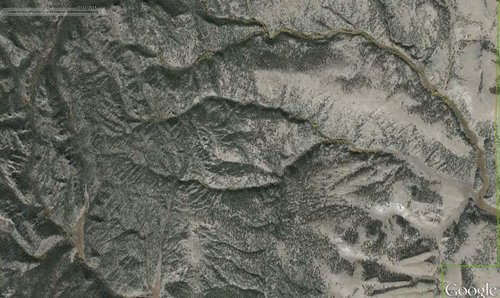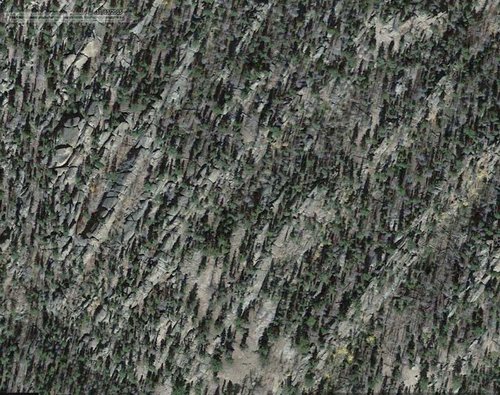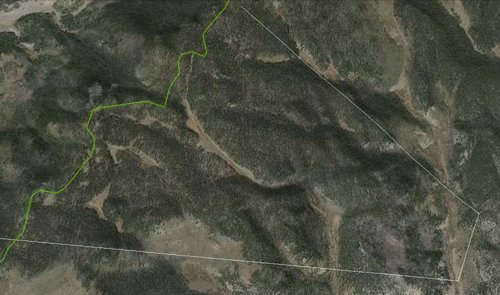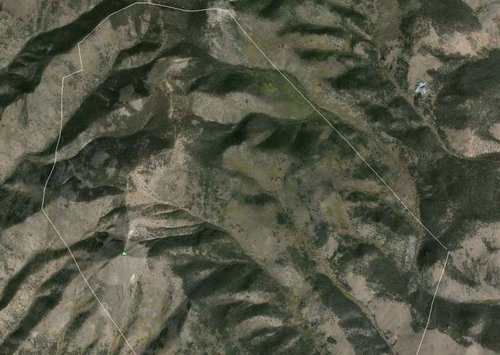homerj
New member
I’m preparing for my first hunt (of anything, ever) and I’m trying to narrow my focus. My goals for this year is to have 1 or 2 encounters w. elk and maybe find a legal bull (I got a lic for bull only, possibly a mistake for this hunt) and put him in the freezer. I have a friend who may accompany me but he owns his own business and sometimes getting away is difficult. I’ll be going solo if he can’t make it. I’ve ridden dirt bikes 1000’s of unsupported miles through the western mountains and desert back country. I’m confident in my fitness and ability to stay alive and get out of the mountains. I’d like some input from Hunt Talk Forum to help me fill the freezer. I’m still not totally clear on what data is important and what is not, so I’m going to list everything I know in the hopes that I’ve gathered something significant. Sorry for the wall of text.
I’d really like some input on where I should be spending my time looking for elk; which of these areas appear to be highest probability? How do you know when to quit an area? I have the entire 9 days of the season off, but even so, that time can slip away pretty quickly without a plan. If this were your hunt where would you start looking for elk? How long would you pound around these three sections? How does snowfall change your priorities? How much snow fall is significant enough to push elk to lower elevation? From what I’ve read/watched the really large bulls are likely to push into hard to access country and hide out, even if the feeding doesn’t look fantastic, but what about the younger bulls? Do they stay at lower elevations and pig out? If you were simply looking for a legal bull does that change the focus area?
I’m looking in southern CO, the GMU has a 22/100 bull/cow ratio, but has an under target population and recent harvests for 3rd season haven’t been great (10% last year/6% last 5). The specific area I’m looking at is an overlap of the summer/winter range according to the Co Hunter Atlas site. I chose this unit mostly because I’ve been riding dirt bikes here pretty extensively for the last 3 yrs. I know there are elk here (I see sign all the time, friends have seen elk on the move while hiking/riding in the area) I’m familiar with the terrain, I’m confident I can get in and out even in deep snow.
There are only 3 areas of the unit that are more than 1 mile from open motorized trails/roads. The largest roadless area adjoins a very large ranch in a major creek bottom. Cover on the ranch property is very thin but the grass is in very good condition. Every time I’ve seen the ranch there have been cattle grazing on the property and up the creek bottoms on the public land side of the fence. On the public land there are two good sized creeks that head down to the large creek that runs through the private property. This area has some low humpy hills with thin, isolated patches of cover interspersed with several unnamed gulches with seasonal water. The altitude in the area goes from about 8500-ft at the far eastern edge to ~9000ft where the cover starts to get thicker. Access is a little tricky. The short hike is 1.5 miles, drops off a high ledge, and then has lots of elevation changes to get into the heart of the area. The long hike is about 3 miles to get to the heart of the area, and while there’s less elevation change, there are still some serious uphill sections. As you move west the timber gets thicker, but the ground is very rocky, there are lots of stripes of exposed rock that run NE/SE. The terrain is a rabbit’s warren of ridges and folds. There are a few foot trails through the area but there aren’t any large north faces. The north faces I do see are long, but only have a vertical relief of 100-150 ft. It looks attractive to me because this is as far from a motor as elk can get in the area; I’ve seen elk rubs all around the perimeter of this area, there really is no level ground, no parks, or large open meadows, very little to attract other hunters, and a lot to discourage them but it seems that there’s enough grass to get through the winter and a refuge on the ranch is never more than 3 miles away, downhill. I’m not sure which is more important to a legal bull elk at this time of year; food or cover? Will they be feeding at the ranch and then heading for cover when the sun comes up, or will they holed up in the gnarly terrain grazing close to their bedding?
Here’s some sample pics (the ranch isn’t seen, but it would be at the far right of this pic.)

Closeup of the exposed rock stripes

The second area is a little to the west of the first, right on the slopes of the continental divide (and the GMU border) but never breaks above tree line. I’ve seen sign in this area too but I haven’t been here as much and so I don’t know if there is more or less sign than the first area. The terrain west of the GMU border is very steep (climbs 900 ft in .8 mile) so perhaps this area is a refuge from pressure on the west side of the GMU border? Some maps show a migration corridor that crosses the divide that is near, but not inside this highlighted area. This area goes from 9500 to 10800 ft. Access is much more straight forward; there is a nice park at the foot (eastern side) and two creek bottoms that get right into the heart of the area. There is also a road that crosses the divide north of the highlighted area, so it’s possible to hike from that road to the area and then hunt down hill to the bottom of the park. This area has good timber coverage and some obvious feeding areas. There are no refuges nearby, and it is just outside of the Co Hunters Atlas winter range. I’m not sure why but this looks inviting which makes me think it will attract other hunters.

The third area is much more typical elk country I’ve seen in Eastman’s etc. This is really high alpine environment. Starting at 10,000 ft and going up to 12,500. There are better vistas and opportunities for glassing but this area is closer to population centers, not far off the major highway in the area. I’m not familiar with this portion of the GMU at all, I have no idea if there are even any elk here, let alone if they’ll still be up in this section by 3rd rifle when there’s much milder areas just down the mountain.

I’d really like some input on where I should be spending my time looking for elk; which of these areas appear to be highest probability? How do you know when to quit an area? I have the entire 9 days of the season off, but even so, that time can slip away pretty quickly without a plan. If this were your hunt where would you start looking for elk? How long would you pound around these three sections? How does snowfall change your priorities? How much snow fall is significant enough to push elk to lower elevation? From what I’ve read/watched the really large bulls are likely to push into hard to access country and hide out, even if the feeding doesn’t look fantastic, but what about the younger bulls? Do they stay at lower elevations and pig out? If you were simply looking for a legal bull does that change the focus area?
I’m looking in southern CO, the GMU has a 22/100 bull/cow ratio, but has an under target population and recent harvests for 3rd season haven’t been great (10% last year/6% last 5). The specific area I’m looking at is an overlap of the summer/winter range according to the Co Hunter Atlas site. I chose this unit mostly because I’ve been riding dirt bikes here pretty extensively for the last 3 yrs. I know there are elk here (I see sign all the time, friends have seen elk on the move while hiking/riding in the area) I’m familiar with the terrain, I’m confident I can get in and out even in deep snow.
There are only 3 areas of the unit that are more than 1 mile from open motorized trails/roads. The largest roadless area adjoins a very large ranch in a major creek bottom. Cover on the ranch property is very thin but the grass is in very good condition. Every time I’ve seen the ranch there have been cattle grazing on the property and up the creek bottoms on the public land side of the fence. On the public land there are two good sized creeks that head down to the large creek that runs through the private property. This area has some low humpy hills with thin, isolated patches of cover interspersed with several unnamed gulches with seasonal water. The altitude in the area goes from about 8500-ft at the far eastern edge to ~9000ft where the cover starts to get thicker. Access is a little tricky. The short hike is 1.5 miles, drops off a high ledge, and then has lots of elevation changes to get into the heart of the area. The long hike is about 3 miles to get to the heart of the area, and while there’s less elevation change, there are still some serious uphill sections. As you move west the timber gets thicker, but the ground is very rocky, there are lots of stripes of exposed rock that run NE/SE. The terrain is a rabbit’s warren of ridges and folds. There are a few foot trails through the area but there aren’t any large north faces. The north faces I do see are long, but only have a vertical relief of 100-150 ft. It looks attractive to me because this is as far from a motor as elk can get in the area; I’ve seen elk rubs all around the perimeter of this area, there really is no level ground, no parks, or large open meadows, very little to attract other hunters, and a lot to discourage them but it seems that there’s enough grass to get through the winter and a refuge on the ranch is never more than 3 miles away, downhill. I’m not sure which is more important to a legal bull elk at this time of year; food or cover? Will they be feeding at the ranch and then heading for cover when the sun comes up, or will they holed up in the gnarly terrain grazing close to their bedding?
Here’s some sample pics (the ranch isn’t seen, but it would be at the far right of this pic.)

Closeup of the exposed rock stripes

The second area is a little to the west of the first, right on the slopes of the continental divide (and the GMU border) but never breaks above tree line. I’ve seen sign in this area too but I haven’t been here as much and so I don’t know if there is more or less sign than the first area. The terrain west of the GMU border is very steep (climbs 900 ft in .8 mile) so perhaps this area is a refuge from pressure on the west side of the GMU border? Some maps show a migration corridor that crosses the divide that is near, but not inside this highlighted area. This area goes from 9500 to 10800 ft. Access is much more straight forward; there is a nice park at the foot (eastern side) and two creek bottoms that get right into the heart of the area. There is also a road that crosses the divide north of the highlighted area, so it’s possible to hike from that road to the area and then hunt down hill to the bottom of the park. This area has good timber coverage and some obvious feeding areas. There are no refuges nearby, and it is just outside of the Co Hunters Atlas winter range. I’m not sure why but this looks inviting which makes me think it will attract other hunters.

The third area is much more typical elk country I’ve seen in Eastman’s etc. This is really high alpine environment. Starting at 10,000 ft and going up to 12,500. There are better vistas and opportunities for glassing but this area is closer to population centers, not far off the major highway in the area. I’m not familiar with this portion of the GMU at all, I have no idea if there are even any elk here, let alone if they’ll still be up in this section by 3rd rifle when there’s much milder areas just down the mountain.

Last edited:




